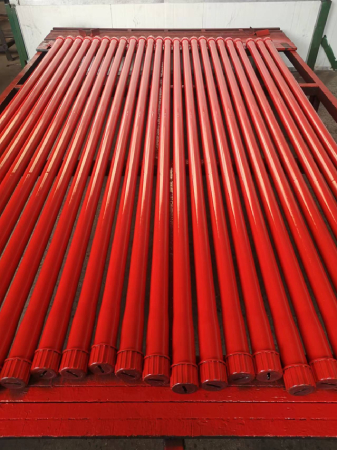- Afrikaans
- Albanian
- Amharic
- Arabic
- Armenian
- Azerbaijani
- Basque
- Belarusian
- Bengali
- Bosnian
- Bulgarian
- Catalan
- Cebuano
- Corsican
- Croatian
- Czech
- Danish
- Dutch
- English
- Esperanto
- Estonian
- Finnish
- French
- Frisian
- Galician
- Georgian
- German
- Greek
- Gujarati
- Haitian Creole
- hausa
- hawaiian
- Hebrew
- Hindi
- Miao
- Hungarian
- Icelandic
- igbo
- Indonesian
- irish
- Italian
- Japanese
- Javanese
- Kannada
- kazakh
- Khmer
- Rwandese
- Korean
- Kurdish
- Kyrgyz
- Lao
- Latin
- Latvian
- Lithuanian
- Luxembourgish
- Macedonian
- Malgashi
- Malay
- Malayalam
- Maltese
- Maori
- Marathi
- Mongolian
- Myanmar
- Nepali
- Norwegian
- Norwegian
- Occitan
- Pashto
- Persian
- Polish
- Portuguese
- Punjabi
- Romanian
- Russian
- Samoan
- Scottish Gaelic
- Serbian
- Sesotho
- Shona
- Sindhi
- Sinhala
- Slovak
- Slovenian
- Somali
- Spanish
- Sundanese
- Swahili
- Swedish
- Tagalog
- Tajik
- Tamil
- Tatar
- Telugu
- Thai
- Turkish
- Turkmen
- Ukrainian
- Urdu
- Uighur
- Uzbek
- Vietnamese
- Welsh
- Bantu
- Yiddish
- Yoruba
- Zulu
Understanding the Purpose and Uses of a Bull Plug in Various Applications
What is a Bull Plug Used For?
A bull plug, often referred to as a bullhead or plug valve, is an essential component in various industrial and plumbing applications. Its primary purpose is to control the flow of fluids within pipes and systems, providing a reliable means for shutting off the flow, diverting it, or allowing it to continue uninterrupted.
Bulldog plugs are typically made from durable materials such as metal or plastic, depending on the specific requirements of the application. These plugs come in different sizes and configurations, allowing them to fit a wide variety of pipes and equipment. The design of a bull plug usually features a cylindrical shape, with an outer thread that allows it to be screwed into a matching socket or hole in the system.
What is a Bull Plug Used For?
In addition to maintenance tasks, bull plugs are commonly used in various industrial settings, including oil and gas, water treatment facilities, chemical processing plants, and many others. In these environments, the ability to quickly and effectively shut off a line is critical for safety and operational efficiency. For example, in the oil and gas industry, a bull plug can be used to secure pipelines and prevent leaks, which could lead to catastrophic environmental damage.
what is a bull plug used for

Moreover, bull plugs play a vital role in the functionality of systems that require precise control of fluid dynamics. In pneumatic and hydraulic systems, they can help regulate the pressure and flow of liquids or gases, ensuring that machinery operates smoothly and efficiently. Improper flow regulation can lead to equipment failure, production downtime, or even accidents, highlighting the importance of these straightforward yet effective devices.
From an operational standpoint, using a bull plug also facilitates effective system design and implementation. Engineers can plan and build systems with designated points for bull plugs, making it easier to troubleshoot or modify systems in the future. This foresight can save time and resources, minimizing disruptions in production and maintenance activities.
While bull plugs are primarily associated with industrial applications, they can also be seen in everyday plumbing. Homeowners may encounter bull plugs in their residential plumbing systems, particularly in areas where shut-off valves are necessary, such as in toilets, sinks, and bathtubs. For DIY enthusiasts, understanding how to use bull plugs properly can empower them to perform minor repairs and maintenance tasks in their homes.
In summary, a bull plug is a versatile and crucial component used across various industries and applications. Its primary function is to control the flow of fluids, making it an invaluable tool during maintenance, repairs, and routine operations. By isolating sections of piping, regulating fluid dynamics, and enhancing system design, bull plugs contribute to safe, efficient, and reliable operations in both industrial and residential settings. Whether you are an engineer, maintenance worker, or a homeowner, understanding the significance of bull plugs can improve safety and efficiency in fluid control systems.
-
Tubing Pup Joints: Essential Components for Oil and Gas OperationsNewsJul.10,2025
-
Pup Joints: Essential Components for Reliable Drilling OperationsNewsJul.10,2025
-
Pipe Couplings: Connecting Your World EfficientlyNewsJul.10,2025
-
Mastering Oilfield Operations with Quality Tubing and CasingNewsJul.10,2025
-
High-Quality Casing Couplings for Every NeedNewsJul.10,2025
-
Boost Your Drilling Efficiency with Premium Crossover Tools & Seating NipplesNewsJul.10,2025







